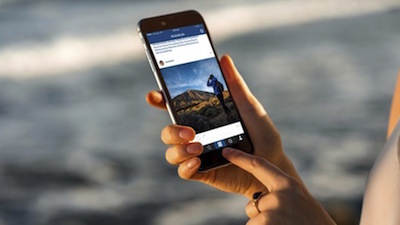Retailers bring the romance of in-store shopping to ecommerce
The CEO of SparkIdeas and CMO of CreativeDrive held a session at Luxury FirstLook 2017: Time for Luxury 2.0 Jan. 18, explaining there is now no longer a reason for consumers to shop in store, with ecommerce providing the same, if not better, information and inventory. However, consumers are still craving the romance of in-store shopping but lack the time and resources to do so, which means there is room for a more luxurious ecommerce experience.
“The truth is if the content is compelling people pay attention to it,” said Malinda Sanna, founder/CEO, of Spark Ideas. “I think another little known fact is that luxury consumers themselves feel as though they are content producers.
“That is why our research platform works because they are so eager to share what shoes are in their closet,” she said.
Luxury Daily produced Luxury FirstLook 2017: Time for Luxury 2.0
Romancifying online shopping
Consumers are often shopping online not because they would rather skip the store, but because the store is not offering the information that can be provided online. They no longer have the time to drop by stores if there is not a utility in going there, when they can just order online.
Often times when a customer walks into a store, they know more than the store associate. But the online experience lacks that romance, which can be manufactured by being creative.

Image courtesy of Bloomingdale’s
Emotions are a substantial part of shopping for luxury products. On social media, brands should take advantage of this emotional pull with visuals.
On Instagram, there are a significant number of brands that do not even have an ecommerce Web site. But they still have a presence on Instagram, because it is that powerful of a platform.
For example, U.S. jeweler Harry Winston made a connection between its Instagram content and its physical points of sale through a shoppable feed.
The brand, which does not offer ecommerce, leveraged Curalate’s Like2Buy platform to drive in-store appointments and product exploration instead of online purchases. Brands’ Instagram audiences tend to be the most engaged, making this initiative a means to connect the brand’s digital followers with its frontline staff (see more).
Emotions and connections
Brands leveraging Instagram do not have to stick with sharing marketing content either, but should share beautiful and visually pleasing photos. For instance, a brand that shares an image of a beautiful sunset is making a connection to consumers who see it.
That connection and bond is extremely important for brands.
Recently, Italian fashion label Dolce & Gabbana put the marketing of its Lucia handbag in consumers’ hands, exemplifying how to harness the power of emotional shopping.
For its “Who is Lucia?” series, the brand hit the streets of global cities, handing the bag to pedestrians and asking them to describe it in their own words. As consumers crave authenticity, hearing testimonials from real people may make for a more trustworthy advertisement (see more).
These visuals and marketing content from brands should be able to be digested quickly. Consumers have short attention spans now, and want to be able to absorb a brand’s story quickly.
“First, be visual,” said Cecilia Streit, chief marketing officer and chief growth officer at CreativeDrive. “Almost eighty five percent of learning is visual. Humans are wired to be visual learners.
“And be quick because visual content which is understood much faster than written text,” she said. “In the book, Thinking Fast and Show, Daniel Kahneman, Nobel Prize winner in behavioral economics, explains the two systems of learning: the fast and intuitive and then the slower, complexity processing system.
“Consumers prefer fast,” she said. “We want to see something, experience it and get it immediately.”
Most of the time, when consumers are browsing a retailer or brand’s Web site, they are looking to be entertained. They are relaxing at the end of a long day and shopping for products.
It is the duty of the brand to provide that experience for users. It is imperative to provide them with an enjoyable experience that is not stressful and provides utility.
“The reason why many luxury consumers are going online is not just for convenience is a way to avoid the absence of negative,” Ms. Sanna said. “If it is not useful, then it is a waste of my time.
“The luxury consumer is so educated today, if they are finding that they know more than the sales girls and there is no added value there, why not just place a big order,” she said. “That becomes luxury for her.
“In our research we’re finding it is actually the older woman who does the most shopping online.”

